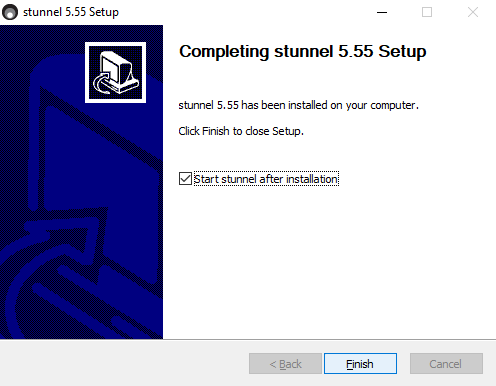

Next, create a user and directories to run the software - on this platform the RPM package does not create the user or directories: # the user and directory for immediate use:
#SETTING UP STUNNEL INSTALL#
RHEL / CentOS 7 as Serverįirst install the base package: yum install stunnel In these examples with CentOS 7 and Ubuntu 14 the package is readily available for both in the base repositories. The stunnel package may be a part of the base distribution or it may be required to use a third party repository such as EPEL or a PPA to obtain. MariaDB traffic will travel over the stunnel proxy, so they should not listen on the public IPs for security best practices. stanza on the slave to match the user created in note 1 Remember to use MASTER_HOST='localhost' in your CHANGE MASTER TO.For both master and slave MariaDB instances, implement bind-address = 127.0.0.1 to lock the daemons to localhost.stanza for the user, use not the actual IP of the remote slave like you would normally. On the MariaDB master GRANT REPLICATION SLAVE ON.This wiki will not cover setting up MariaDB replication as it's a standard, by the book process however two notes: Two different Linux distributions will be used to verify the technology is agnostic.Īctual public IPs would be used in implementation as appropriate. One server is located in one area of the USA, the second server in another USA region, and standard public IPv4 networking to connect the two servers. In this wiki, a traditional MariaDB replication configuration will be used to exemplify use as compatible version 5.5.x is available on both distributions. The daemon software connects to a localhost port, the connection is proxied over the SSL tunnel, then handed to the server localhost port as defined. One (or more) endpoint is run in server mode, the other endpoint is run in client mode.

Stunnel is a SSL proxy designed to add TLS encryption to existing clients and servers without changes to the daemon's themselves.


 0 kommentar(er)
0 kommentar(er)
